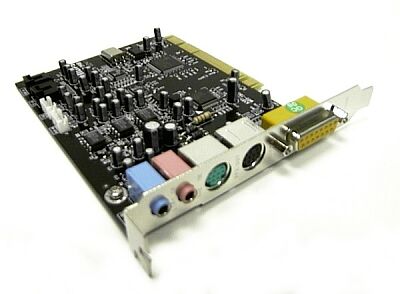Geluidskaarten, je hebt ze in verschillende soorten en maten en het kan dan ook af en toe moeilijk zijn om een goede kaart uit te kiezen. Heeft een kaart veel ruis? Zijn de drivers stabiel? Is het midi-geluid goed? Stereo, quadrafonie of 5.1, digitale in en uitgangen en noem maar op. Allemaal kriteria waarmee een kaart voor de een meer geschikt is als voor de ander. The Tech Report heeft een selectie gemaakt van zes geluidskaarten en deze nader aan de tand gevoeld:
- Hercules Gamesurround Muse XL
- Hercules Gamesurround Fortissimo II
- Turtle Beach Santa Cruz
- Philips Acoustic Edge
- Creative Labs Sound Blaster Live!
- Creative Labs Sound Blaster Audigy
Spelletjes spelen is natuurlijk veel leuker met geluid. The Tech Report test daarom de performance van de zes geluidskaarten op zowel een 2GHz Pentium 4 en een 666MHz Pentium 3. De performance van de kaarten, onder zowel Quake 3 Arena en Serious Sam SE, blijkt op beide machines aardig bij elkaar in de buurt te liggen. Alleen de Muse XL blijft achter op de Pentium 3. Maar performance is niet alles. Geluidskwaliteit telt natuurlijk ook. Hier blijken de beide Hercules kaarten en de Soundblaster Audigy net dat beetje beter te zijn dan de rest. In het eindoordeel worden echter de Soundblaster Audigy en de Philips Acoustic Edge aanbevolen. Vooral het 3D geluid van de Philips springt eruit:
Now that we've said all that, if we had to pick an overall winner, we, umm, wouldn't. Instead we'd pick two: the Sound Blaster Audigy for music and the Philips Acoustic Edge for games. Many may find our choice of the Audigy ironic considering how hard I slammed on the card earlier, but the Audigy's sound quality (especially in the MP3 playback) is head and shoulders above the other cards here. Ironically, it's likely that the Audigy's Philips DAC (the one that gives Creative ammunition for their farcical 24/96 claim) bears the most responsibility for this outcome�not that that means they're any less full of it.Meanwhile, on the games side, the Philips Acoustic Edge does more for 3D audio than any of the positional audio techniques we listened to, and it basically does it by pulling an extra two channels out of thin air. If the Acoustic Edge's QMSS abilities hold up in other games the way they did in the ones we tested, gamers everywhere will be very happy with this card.

Met dank aan Operations voor de tip.

:strip_exif()/i/1007155164.jpg?f=thumbmedium)
:fill(white):strip_exif()/i/1278056854.jpeg?f=thumbmedium)
:fill(white):strip_exif()/i/1251469000.jpeg?f=thumbmedium)